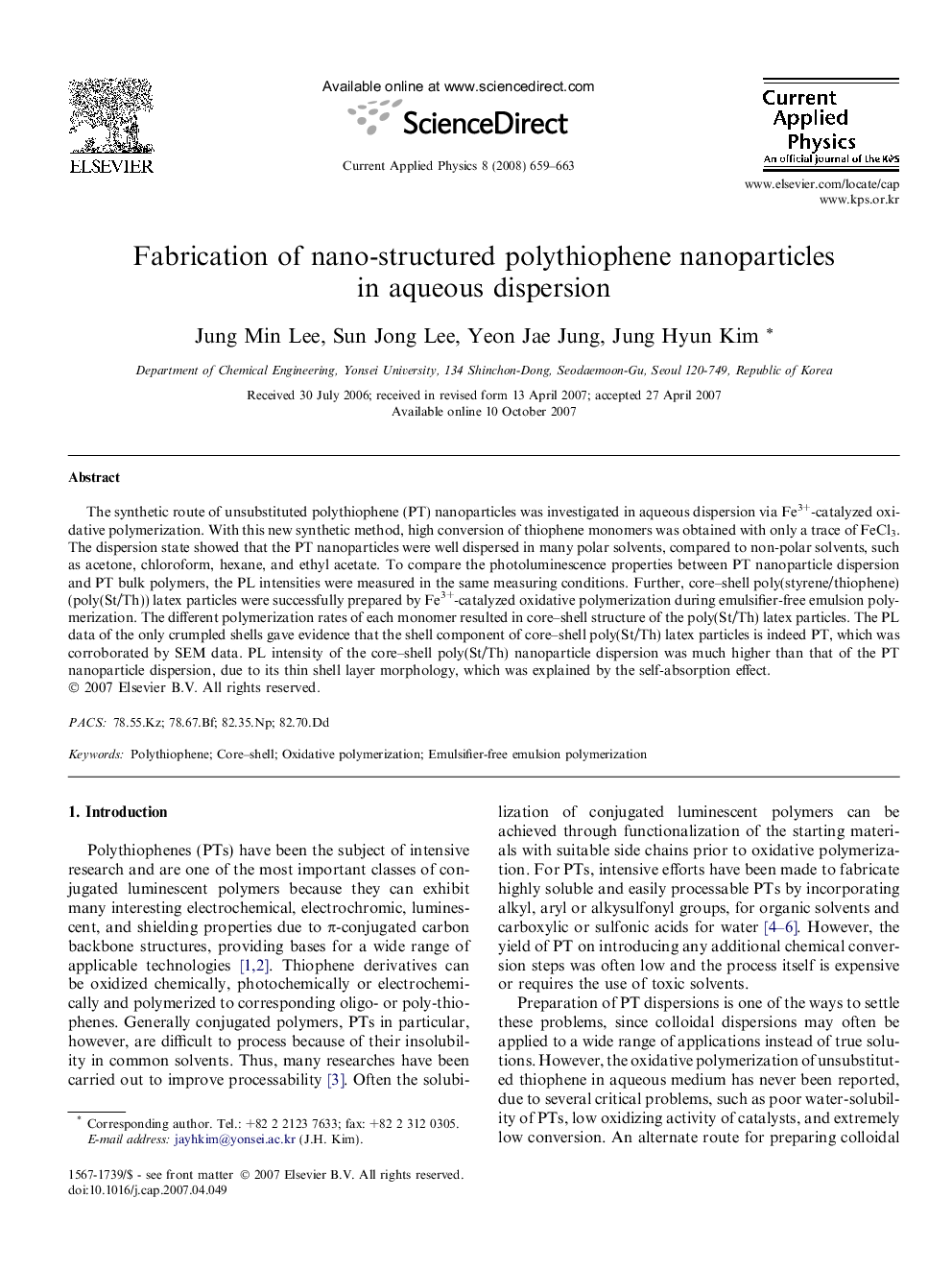| Article ID | Journal | Published Year | Pages | File Type |
|---|---|---|---|---|
| 1788339 | Current Applied Physics | 2008 | 5 Pages |
The synthetic route of unsubstituted polythiophene (PT) nanoparticles was investigated in aqueous dispersion via Fe3+-catalyzed oxidative polymerization. With this new synthetic method, high conversion of thiophene monomers was obtained with only a trace of FeCl3. The dispersion state showed that the PT nanoparticles were well dispersed in many polar solvents, compared to non-polar solvents, such as acetone, chloroform, hexane, and ethyl acetate. To compare the photoluminescence properties between PT nanoparticle dispersion and PT bulk polymers, the PL intensities were measured in the same measuring conditions. Further, core–shell poly(styrene/thiophene) (poly(St/Th)) latex particles were successfully prepared by Fe3+-catalyzed oxidative polymerization during emulsifier-free emulsion polymerization. The different polymerization rates of each monomer resulted in core–shell structure of the poly(St/Th) latex particles. The PL data of the only crumpled shells gave evidence that the shell component of core–shell poly(St/Th) latex particles is indeed PT, which was corroborated by SEM data. PL intensity of the core–shell poly(St/Th) nanoparticle dispersion was much higher than that of the PT nanoparticle dispersion, due to its thin shell layer morphology, which was explained by the self-absorption effect.
